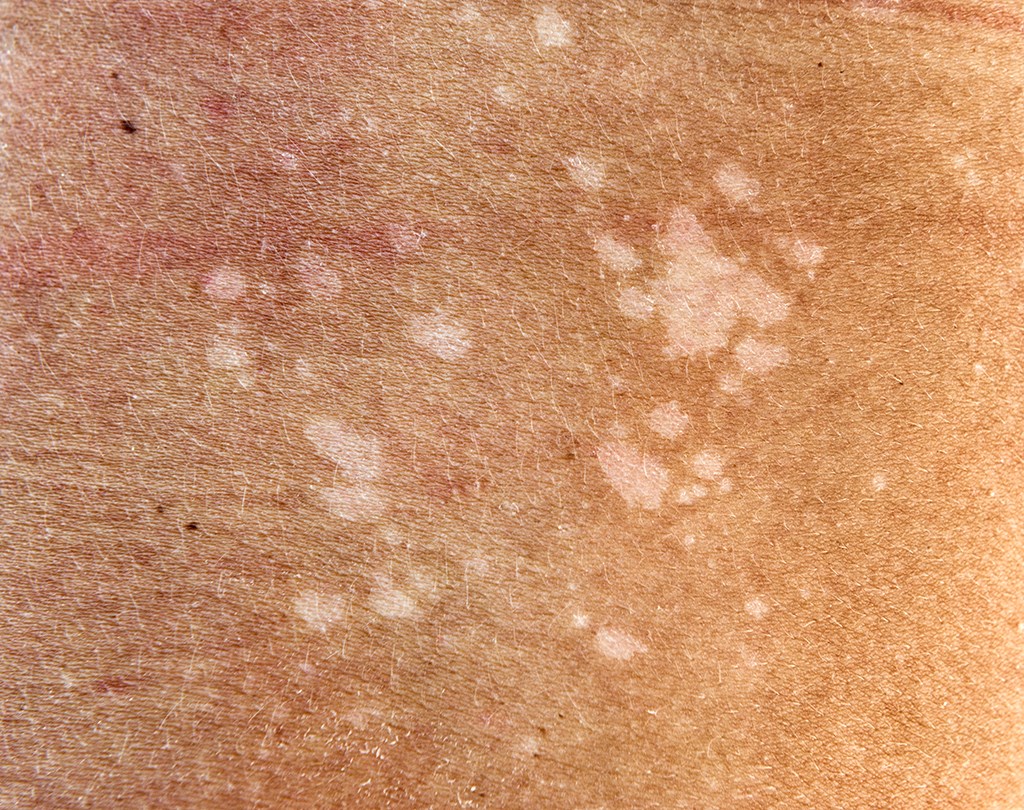Tinea Versicolor
Tinea versicolor is a common skin condition caused by the overgrowth of yeast on the skin. We all have yeast living on our skin, but occasionally it may grow out of control and cause this skin condition. Yeast is a type of fungus, but this condition is not contagious. The following factors can cause yeast to overgrow: hot, humid weather; lots of sweating; oily skin; or a weakened immune system.
Signs and Symptoms
Spots appear on the skin, most frequently on the chest and back, but they can also occur in other areas. The spots can range in color from white, pink, salmon, red, tan or brown. The spots can be dry and scaly and occasionally itchy. The spots will look more noticeable when the skin tans. This is because the yeast prevents the affected areas from tanning.
Treatment
Topical creams and shampoos applied directly to the skin are the most common treatments. This includes anti-fungal shampoos and creams. Anti-fungal pills can be used if tinea versicolor covers a large area of the body or keeps returning after treatment with the topical agents. Anti-fungal pills can have serious side effects, and a patient must be monitored while on the medication.
Even when the yeast is treated and gone, the skin may continue to have lighter or darker patches. It can take months for the skin to return to its normal color.
Tinea versicolor often returns, especially when the weather becomes warm and humid. It is often necessary for people who get tinea versicolor to use a medicated cleanser year round to prevent the yeast from overgrowing.


